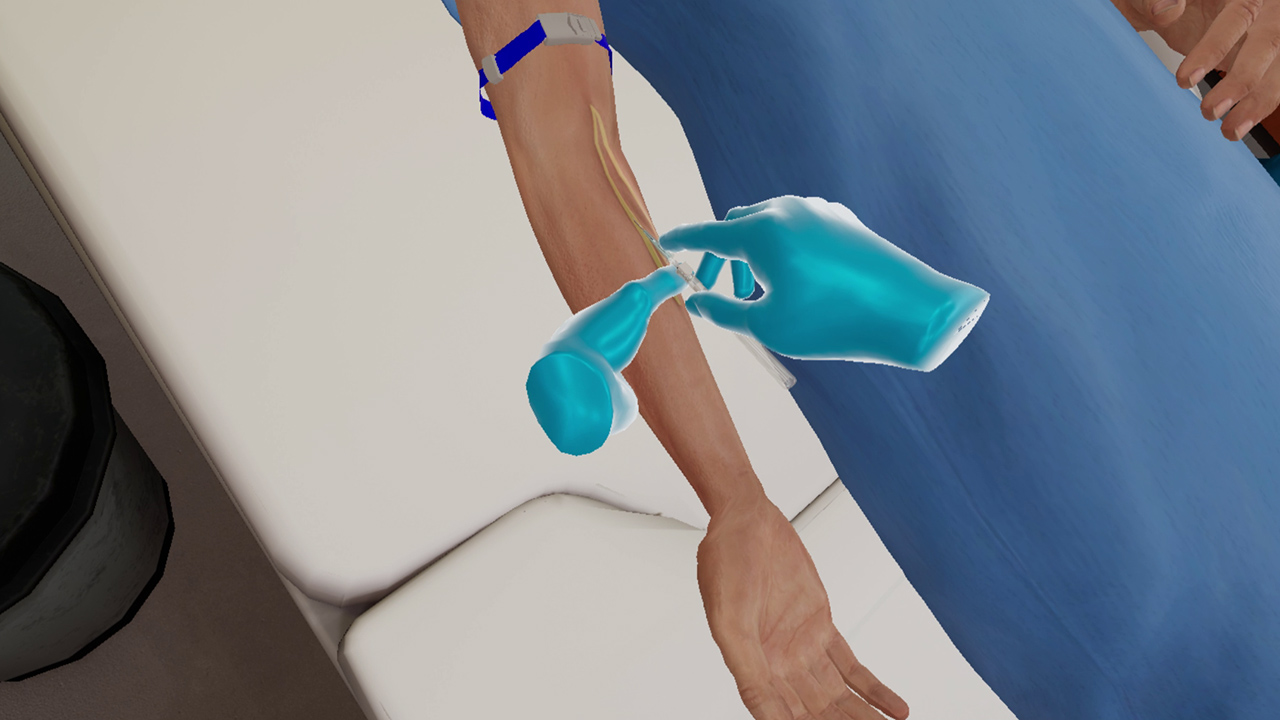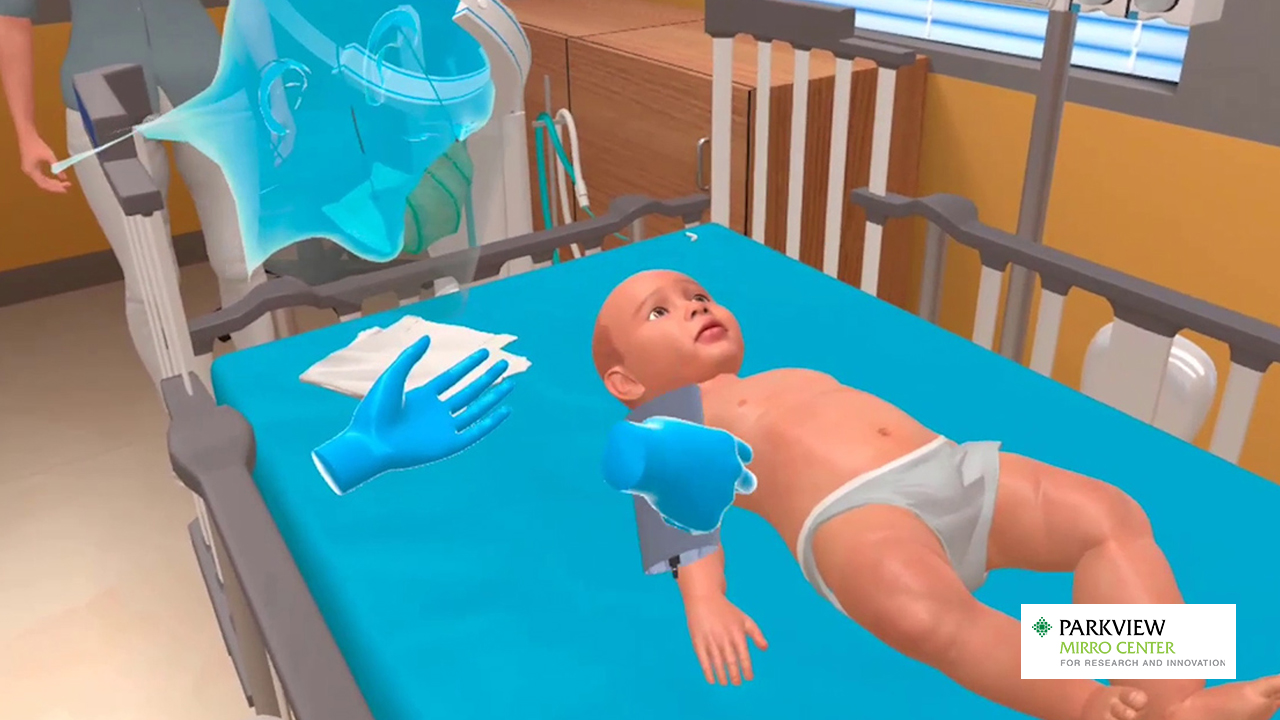
It could be a phlebotomist drawing blood or a surgeon performing a Lateral Canthotomy procedure or it could simply be a nurse on their shift taking care of patients. In all instances the one thing that is common is patient care. Be it an invasive procedure or a care regime, positive patient outcome is always the goal and one factor that plays an important role in achieving this end is effective and engaging training. While traditional methods of training have been producing positive results over the decades, the introduction of XR in healthcare is proving to be a game-changer, literally.
VR Simulation Training for Immersive Experience
What is it in this new method of training that is helping learners learn better and trainers train better? Before we delve into the benefits, let us quickly look at some of the top challenges being faced by the healthcare training scenario.
– Limited opportunities for hands-on experiences
– Lack of training resources
– Shortage of experienced trainers
– Logistical constraints in managing training facilities
– Changing policies and evolving crises
– Rapidly changing technologies and advancements in treatment methods
These are just the tip of the iceberg. Much has been said about the challenges and the constraints. What we need are solutions to overcome these challenges and XR in healthcare is proving to be that solution. By using VR simulation for training procedures and skill development, learners are exposed to quality learning opportunities, helping them prepare better for their real-world tasks.
So, what is it that makes this relatively new method of training effective and engaging to deliver positive outcomes?
Realistic immersive training – A VR simulation training is comprised of digitally created environments that mimic real world scenarios. When a learner enters a simulation they step into an environment that brings them face-to-face with challenges are tasks that one would encounter in real life. Be it is managing a case of Pediatric Drowning or gaining IV access in a patient, every experience is realistic. With the coming of AI and the inclusion of AI-powered patients, the realism factor takes a leap as learners get to interact with patients as they would in a real-world set up.
Hands-on practice opportunities – Let’s face it, when it comes to traditional training methods, there is a limit to which a learners gets exposure to hands-on practice. This could be due to shortage of resources or lack of training opportunities. There are only a certain number of cadavers that learners can practice with. And what are the chances that every learners gets to practice treating a case of anaphylaxis? When it comes to XR in healthcare, every situation and scenario can be created because it is all in the virtual world. Every learner gets hands-on practice on responding to and managing cases of seizures, embolism, accidents . . . the possibilities are endless.
Asynchronous training: Along with the shortage of resources, the lack of experienced trainers has been a cause of constant worry. It is not surprising when American Association of Colleges of Nursing (AACN) reported a critical shortage of nursing faculty, resulting in the turning away of over 90,000 qualified applicants in 2021. The scene has not changed much since then. With VR simulation training, this challenge can be overcome as the constant presence of a trainers is not a necessity. With a VR headset and it’s applications, learners can take their lessons at a time convenient to them all by themselves. The programs, like those provided by MedVR Education, are equipped with training and assessment mode. The training mode guides learners throughout the process. Once confident of their skills and knowledge, learners can take the assessment and assess themselves based on the result achieved.
Instant and real-time feedback – Incorrect medication to an anaphylactic patient will produce unfavorable results. When practicing in a virtual environment with a virtual patient, the learner is given instant feedback in the form of a deteriorating patient and prompting to take immediate actions to manage the situation. Every simulation training session is followed by a debriefing which helps the learner analyze and evaluate themselves. This debriefing provides an insight into their performance helping them identify shortcomings and errors. Based on this feedback, improvements can be made, focusing on areas calling for extra attention and effort.
Learning from mistakes: Instant feedback is beneficial in also providing the learners with an opportunity to transform mistakes into learnings. A virtual environment is a safe and controlled place to practice healthcare skills. A mistake does not result in any tragedy or have catastrophic consequences. What it does present is the effect of an action on a patient. An unfavorable result will draw the attention of the learner to the error and serve as a lesson to remember. This can be said to be on the significant advantages of XR in healthcare training.
Anytime, anywhere learning – Balancing work and training can be quite a challenge for many. From balancing it takes on the form of juggling and managing both with efficiency can take a toll in many forms. Time bound classes and meeting shift timings result in one taking precedence over the other. Coordinating trainer and learner timings can also become challenging. With VR simulations, learners are given the benefit of taking their training at times convenient to them. The constant presence of a trainer is not required, specific class timings need not be met, and learners can strap on a headset at a location of their choice and start learning.
With the coming of VR training sessions in the field of healthcare, the unthinkable is now a reality. One application can be used to train a vast number of learners, no elaborate facility needs to be maintained, wear and tear of training material will become a thing of the past, and quality learning can be made available to every aspirant in the healthcare industry. XR in healthcare is truly a gamechanger that is poised to produce a team of highly efficient and able healthcare professionals.

